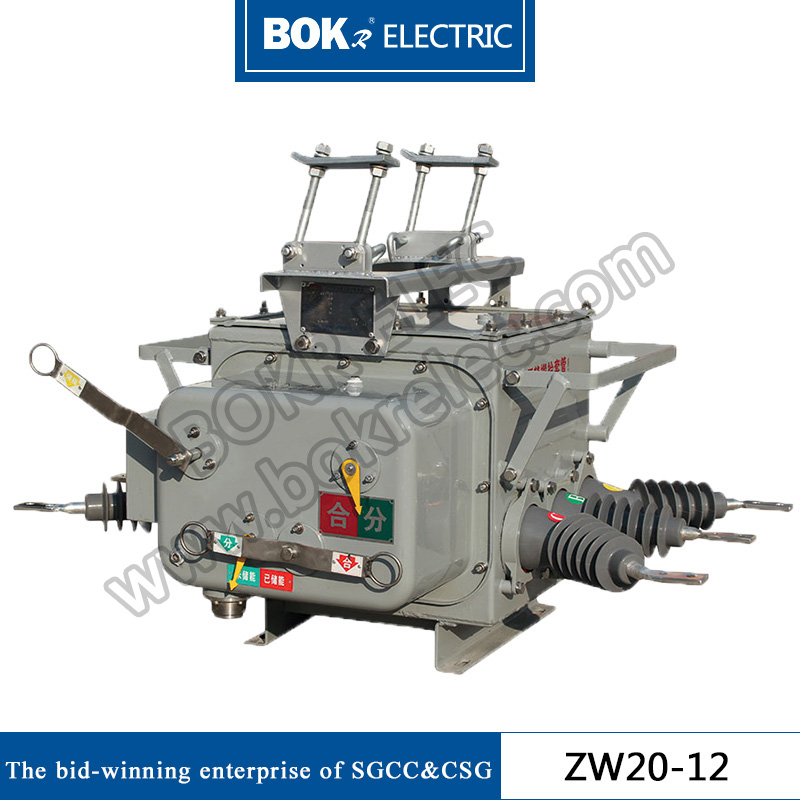What is the lifespan of a Vacuum Circuit Breaker?
In the realm of electrical engineering, the longevity and reliability of components are paramount. One such component that plays a pivotal role in electrical systems is the Vacuum Circuit Breaker (VCB). Understanding the lifespan of a VCB is crucial for ensuring the uninterrupted operation of electrical networks and preventing costly downtime. In this comprehensive guide, we delve into the intricacies of VCB lifespan, factors affecting it, maintenance practices, and more.
What is a Vacuum Circuit Breaker?
Before delving into its lifespan, let's first elucidate what a Vacuum Circuit Breaker entails. A Vacuum Circuit Breaker is a type of circuit breaker where the arc quenching takes place in a vacuum environment. Unlike traditional circuit breakers, which use oil or gas for arc extinction, VCBs utilize vacuum technology to extinguish the arc when the contacts separate during interruption.

Factors Influencing VCB Lifespan
Several factors influence the lifespan of a Vacuum Circuit Breaker, ranging from design considerations to operating conditions. Here are some crucial factors to consider:
Design Quality
The quality of the VCB's design plays a significant role in determining its lifespan. Components manufactured with high-quality materials and precision engineering tend to have a longer operational life.
Operating Environment
The operating environment of the VCB greatly impacts its longevity. Factors such as temperature fluctuations, humidity levels, and exposure to contaminants can accelerate wear and tear, thereby affecting the lifespan of the breaker.
Maintenance Practices
Regular maintenance is imperative for extending the lifespan of a Vacuum Circuit Breaker. Routine inspections, lubrication of moving parts, and timely replacement of worn-out components are essential maintenance practices that can prolong the operational life of the VCB.
Electrical Load
The magnitude and frequency of electrical loads imposed on the VCB can influence its lifespan. Continuous overloading or frequent switching operations beyond the rated capacity can expedite wear and deterioration of the breaker's components.
Lifespan Expectancy of Vacuum Circuit Breakers
While the lifespan of a Vacuum Circuit Breaker can vary depending on the aforementioned factors, on average, VCBs are designed to have a lifespan ranging from 20 to 30 years. However, with proper maintenance and adherence to operational guidelines, it is not uncommon for VCBs to exceed their expected lifespan.
Maintenance Practices to Extend VCB Lifespan
To ensure optimal performance and longevity of Vacuum Circuit Breakers, the following maintenance practices are recommended:
1. Regular Inspections
Periodic inspections should be conducted to assess the condition of the VCB's components, including contacts, insulation, and operating mechanisms. Any signs of damage or wear should be addressed promptly to prevent further deterioration.
2. Lubrication
Lubrication of moving parts is essential to minimize friction and wear within the VCB. Using high-quality lubricants and following manufacturer-recommended lubrication intervals can enhance the operational efficiency and lifespan of the breaker.
3. Cleaning
Regular cleaning of the VCB's internal and external components helps remove dust, dirt, and contaminants that may impede its performance. Care should be taken to avoid abrasive cleaning methods that could damage delicate parts.
4. Replacement of Worn-out Components
Over time, certain components of the VCB may wear out or become damaged. It is crucial to replace these components promptly with genuine parts sourced from reputable manufacturers to maintain the integrity and reliability of the breaker.
Conclusion
In conclusion, understanding the lifespan of a Vacuum Circuit Breaker is essential for ensuring the reliability and safety of electrical systems. By considering factors such as design quality, operating environment, maintenance practices, and electrical load, stakeholders can proactively manage VCB lifespan and mitigate the risk of unexpected failures. By adhering to recommended maintenance practices and operational guidelines, VCBs can continue to serve their intended purpose for decades, contributing to the seamless operation of electrical networks.



